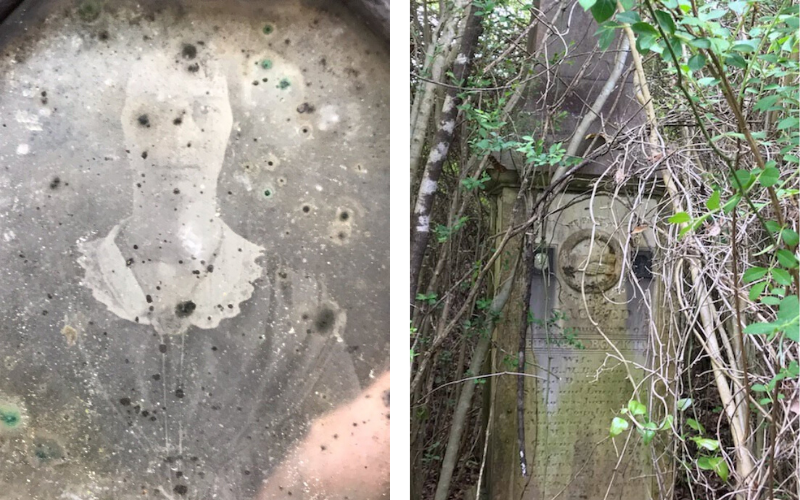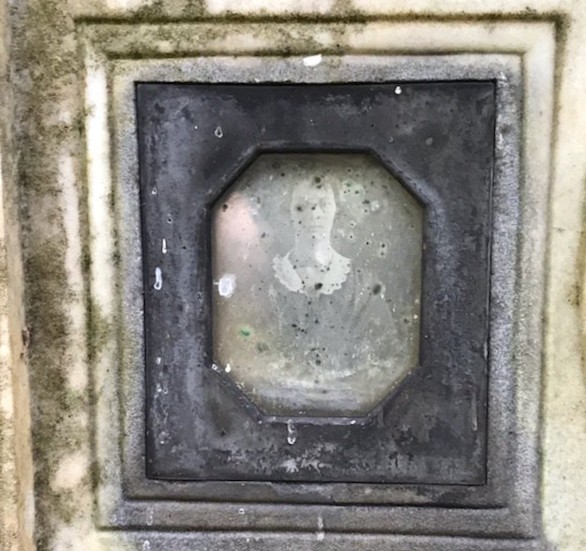CMP Professor Helps Identify 19th-Century Tombstone

Around the same time as Idaho State’s extended spring break, Communication, Media and Persuasion professor Terry Ownby began receiving emails and missed phone calls from an unknown number in Alabama.
Ownby initially ignored the calls, thinking they were spam. Eventually, the caller left a message on his office phone — Ken Willis, an employee of the Alabama Department of Transportation, was seeking Ownby’s professional advice.
Willis, who lives in Tuscaloosa, had discovered an old, vine-encroached family cemetery with a remarkable tombstone. The tall, pillar-like structure, memorializing a young woman who died in 1847, featured a daguerreotype photograph on one side.
Introduced in 1839, the daguerreotype was the first publicly available photographic process.
Each daguerreotype photograph is a unique image chemically imprinted on a silver-plated copper sheet. Because daguerreotypes are very delicate, most are carefully preserved. Yet, the daguerreotype in the Alabama cemetery had survived the elements for 173 years.
After Willis discovered the tombstone, he set out to find an authority of Southern photographers. He came across a research article written by Ownby and published in The Southern Quarterly: A Journal of Arts & in the South. Willis began contacting Ownby after reading the article, entitled “Reconstructing Silent Voices in Southern Photographic History.”
Once the two finally connected, Ownby went to work. He scoured Library of Congress records and found documentation of when photographic images were first incorporated into tombstones.
In 1851, he learned, a Massachusetts photographer who owned a studio in South Carolina received a U.S. patent for embedding daguerreotype photographs into tombstones. That was four years after the practice began in Alabama.
Based on Ownby’s findings and recommendations, Willis has now reached out to other state agencies, including the state’s historical society, to begin preservation of one of the oldest known examples of early photographs being embedded in tombstones.
Story written by Terry Ownby and edited by Madison Shumway

